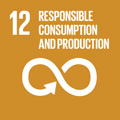- Docente: Letizia Sambri
- Credits: 10
- SSD: CHIM/06
- Language: Italian
- Moduli: Letizia Sambri (Modulo 1) Mauro Comes Franchini (Modulo 2)
- Teaching Mode: In-person learning (entirely or partially) (Modulo 1); In-person learning (entirely or partially) (Modulo 2)
- Campus: Ravenna
- Corso: First cycle degree programme (L) in Chemistry and Technologies for the Environment and Materials (cod. 8515)
Learning outcomes
When the course ends, the students develop a basic knowledge of the Organic Chemistry. The basics are: naming and structure of organic compounds; graphical drawing of the chemical structure of organic compounds, structure and reactivity of the functional groups, isomeric structures concepts, regio- and stereoisomerism, structure and reactivity of reactive intermediates. A second set of required concepts includes simple organic reactions: electrophilic and nucleophilic substitution to aliphatic and aromatic systems; addition and elimination reactions; nucleophilic addition and nucleophilic substitution to carbonyls. The students learn also the main experimental techniques employed in organic chemistry: distillation, solvent extraction, crystallization and chromatograpy, the methodologies employed in simple organic reactions and the classic characterization methods. Finally, the students grow sensitivity to the risks involved in the laboratory techniques, how to use the individual safety devices and how to manage and dispose of glass devices and chemicals.
Course contents
Prerequisites
- Atomic structure and chemical bond - Schroedinger atomic model, quantic numbers, orbitals and electronic configurations;
- Equilibria in solution - pH - Definitions of acid and base;
- Termochemistry and introduction to chemical thermodynamics - Enthalpy and bond energy - Entropy and disorder - Gibbs energy and spontaneous chemical reactions;
- Free energy, Equilibrium constant and its dependence on temperature;
- Chemical reactions and their balancement.
Contents
Reminder of general chemistry. The organic compounds. Electronic effects of functional groups. Reactive intermediates and their stabilization.
BONDING AND ISOMERISM
ALKANES.
ALKENES.
ALKYNES.
AROMATIC COMPOUNDS
STEREOISOMERISM
ALCOHOLS, PHENOLS AND THIOLS
HALOGEN DERIVATIVES
ETHERS, EPOXIDES AND THIOETHERS.
ALDEHYDES AND KETONES.
CARBOXYLIC ACIDS AND DERIVATIVES (ACYL HALIDES, ANHYDRIDES, ESTERS, AMIDES, NITRILES).
AMINES.
LABORATORY
Safety in a laboratory of organic chemistry: products, apparatuses, standard procedures, waste disposal, common hazards, safe working practice, and emergency procedures.
Laboratory equipments and procedures: glassware, filtration devices, heating mantles and plates, stirring methods, vacuum pumps, rotary evaporators, equipment assembly, the laboratory notebook.
Base procedures in a laboratory of organic chemistry: distillation, extraction, crystallisation, thin-layer- and column-chromatography.
Characterisation of organic molecules: infrared spectroscopy, mass spectrometry, NMR spectroscopy, polarimetry.
Examples of synthesis, separation, purification, and characterisation of organic compounds (examples of simple reactions) with measurement of physical constants.
The chemical literature: the structure of chemical information and literature, on-line databases and resources.
Readings/Bibliography
Condensed texts:
- J. McMurry, Fondamenti di Chimica Organica, IV Ed. Italiana, Zanichelli, 2011;
- W. Brown, T. Poon, Introduzione alla Chimica Organica, IV Ed., EdiSES, 2011.
- P. Yurkanis Bruice, Elementi di Chimica Organica, II Ed., EdiSES, 2017.
Expanded texts:
- P. Yurkanis Bruice, Chimica Organica, III Ed. Italiana, EdiSES, 2017;
- W. H. Brown, B. L. Iverson, E. V. Anslyn, C. S. Foote, Chimica Organica, VI Ed., EdiSES, 2019 (linked to: B. L. Iverson, S. Iverson, Guida alla Soluzione dei Problemi, IV Ed., EdiSES, 2016);
- J. McMurry, Chimica Organica, IX Ed. Italiana, Piccin, 2017;
- Chimica Organica (a cura di B. Botta), edi-ermes, 2011;
- D. E. Levy, Arrow Pushing in Organic Chemistry, Wiley, 2008 (II Ed, 2017).
Exercises:
- M. V. D'Auria, O. Taglialatela Scafati, A. Zampella, Guida Ragionata allo Svolgimento di Esercizi di Chimica Organica, Loghia Editrice (NA), IV Ed., 2017.
- for exercises on baisc organic chemistry, see: http://www2.fci.unibo.it/~nanni/orgweb/
Lab texts:
- R. M. Roberts, J. C. Gilbert, S. F. Martin, Chimica Organica Sperimentale, Zanichelli, Bologna, 1998;
- H. Hart, L. E. Craine, Laboratorio di Chimica Organica, Zanichelli, Bologna, 1998.
Teaching methods
Lessons supported by electronic presentations, exercises, and practical activity in the laboratory (introduction during the lectures) performed by the students under the supervision of the teacher.
Lessons and lab practice could be modified, due to the pandemic emergency, by directives by Italian authorities.
As concerns the teaching methods of this course unit, all students must attend Module 1, 2 [https://www.unibo.it/en/services-and-opportunities/health-and-assistance/health-and-safety/online-course-on-health-and-safety-in-study-and-internship-areas] online, while Module 3 on health and safety is to be attended in class. Information about Module 3 attendance schedule is available on the website of your degree programme
Assessment methods
The assessment methods consist in a written exam (within 2 hours, without notes and books except the periodic table) and a lab test.
The written exam consists in 4 open questions, on the theoretical part of the course about the structure, synthesis, purification and reactivity of organic molecules (6 X 4= 24 points maximum).
The laboratory test consists in an experience in the lab followed by a short discussion with the teacher (12 points maximum).
The maximum score is 36 on 30, from 32 the final score will be 30 cum laude.
Enrollment in Almaesami is mandatory
Teaching tools
PowerPoint presentations (whole course) and written lectures (laboratory section only) by the teachers will be available on-line.
Office hours
See the website of Letizia Sambri
See the website of Mauro Comes Franchini
SDGs



This teaching activity contributes to the achievement of the Sustainable Development Goals of the UN 2030 Agenda.
